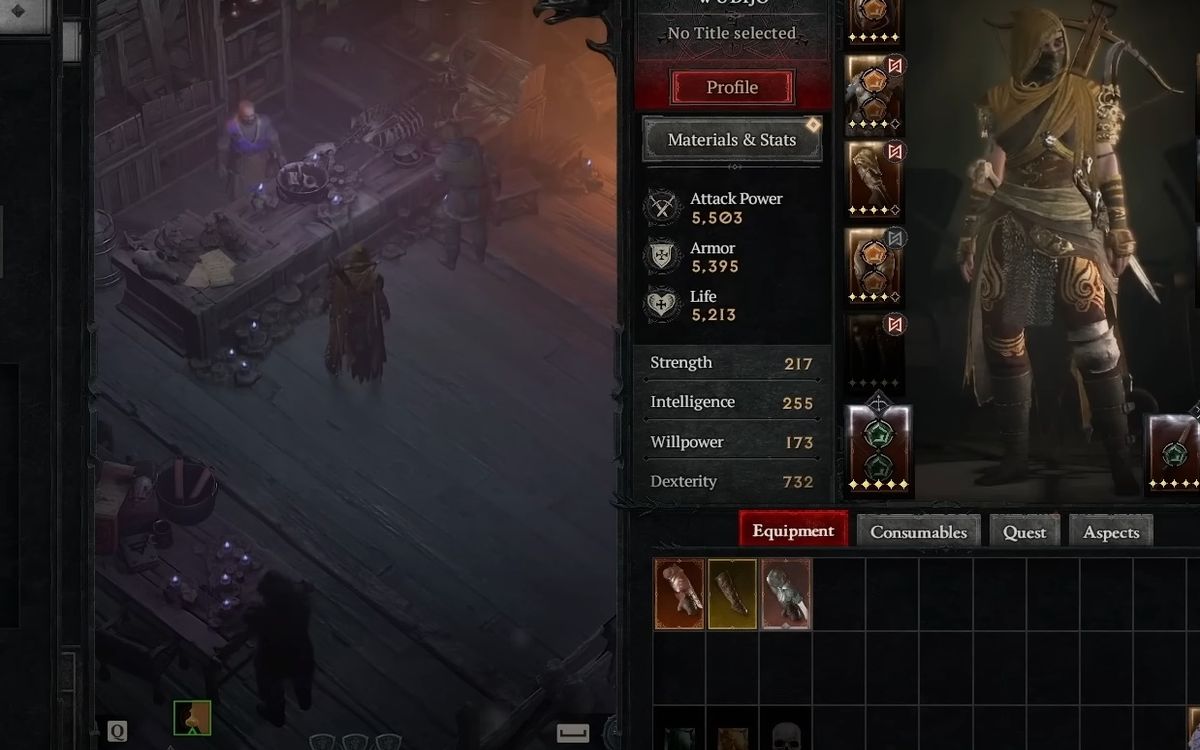Diablo 4 aims to reintroduce the joy and challenge of crafting. Gone are the days of monotonous and disconnected crafting. Instead, brace yourself for a system that blends seamlessly with the game’s environment and narrative.
TL;DR
- Diablo 4 is redefining the art of crafting, making it an immersive experience.
- Crafting materials are now region-specific, promoting exploration.
- Get ready to interact with a myriad of NPCs, each adding depth to the crafting process.
- Crafting is pivotal, both for casual gamers and endgame enthusiasts.
Unboxing crafting challenge in Diablo 4
As Diablo 4’s developers breathe life into its vast world, crafting becomes more than just an add-on. It’s central, rewarding, and offers meaningful choices at every turn. Moreover, Diablo 4 introduces a crafting twist that emphasizes exploration. Materials are region-specific.
To craft that coveted item, you’ll find yourself journeying through different terrains, battling unique foes, and discovering hidden secrets.
Your Crafting companions
Journeying through Diablo 4, you won’t be alone in your crafting endeavors. Several NPCs await, each offering specialized services:
- The Blacksmith: Meet him early on and watch him craft, salvage, and upgrade your armor and weapons. Remember, every item rarity, excluding Unique weapons, can be crafted.
- The Jeweler: Unlockable at level 20, this craftsman deals in shiny baubles. Rings, amulets, and the art of upgrading gems fall under his expertise.
- The Alchemist: This mysterious character handles potions. As you explore, gather various plants to create unique concoctions that boost your stats and resistances. Only one potion effect is active at a time, so choose wisely!
- The Occultist: This entity enchants equipment, crafts sigils, and manages the intricate process of extracting and imprinting Legendary Aspects onto gear.
Crafting materials & you
In Diablo 4, a whopping 23 materials and three distinct currencies await your discovery. Grouped into Monster Parts, Ores, Skins, and Salvaged Materials, players will find a dedicated inventory storage for these treasures.
- Ores: Found in chests and from rocky ore veins during exploration.
- Skins: Harvested from beast-type foes such as spiders and werewolves.
- Monster Parts: Loot from specific enemies or hidden in cellars.
- Salvaged Materials: Extracted at the Blacksmith’s through salvaging. The rarer the item, the superior the material.
Why crafting is essential
Whether you’re a casual player or eyeing endgame content, crafting in Diablo 4 is indispensable. Why?
- Loot accrues rapidly. Instead of selling, consider salvaging.
- Gold is abundant, but salvaged materials are priceless.
- Salvaging items offers the opportunity to customize gear appearances through the “Wardrobe” function.
Conclusion
Diablo 4’s crafting system is poised to be an immersive, integrated, and expansive aspect of the game. It challenges players to explore, strategize, and delve deep into its intricacies. With region-specific materials, a plethora of NPCs, and vast crafting options, it’s a system waiting to be mastered.
FAQs
Is crafting essential in Diablo 4?
Absolutely! Both casual and hardcore players will benefit immensely from the revamped crafting system.
Where can I find crafting materials?
Materials are spread across the game world. From specific enemies to hidden cellars, exploration is key.
Can I customize the appearance of my gear?
Yes! Salvaging items in Diablo 4 allows players to change their gear’s appearance via the “Wardrobe.”
Are all items craftable?
Most item rarities can be crafted. However, Unique weapons remain an exception.
How does region-specific crafting impact gameplay?
It adds depth to the game, encouraging players to explore different regions to gather specific crafting materials.
